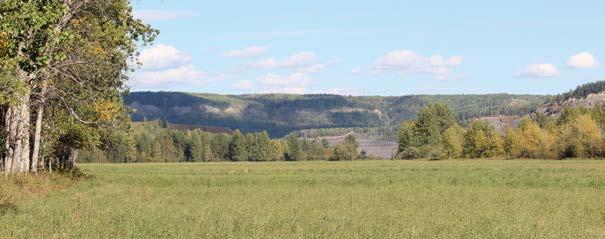
9 minute read
Energy Use and Savings in Strata Homes
Tony Gioventu
Is the strata faced with an owner who just bought an electrical vehicle and there no charging stations?
Has an owner installed a highefficiency furnace and altered the building envelope without permission of the corporation?
Are owners demanding permission to install air conditioners because of the changing climate?
Rising operating costs and changing technologies have provided opportunities for strata corporations to upgrade building systems to operate more efficiently with reduced environmental impact, increased services and comfort benefits, and reduced operating costs.
There are many variations on strata corporation designs and building systems, property designations, and technology variations, strata councils, property managers. Owners are often bewildered by the options available and the procedures to follow to implement upgrades and how to navigate the complications of authorized owner alterations to common property.
Electric-vehicle charging stations, heat pump make-up air units, LED lighting upgrades, high-efficiency furnaces, heat pump air conditioning and heating in apartments, rooftop solar installations, building design and material changes during major upgrades, and site wind turbines are investments strata corporations are implementing across our province. Electric-Vehicle Charging Stations If a strata corporation is installing an electric-vehicle charging station (EVSE) or an owner is requesting permission for an EVSE installation to a parking space that is limited common property, the strata council will first need to determine the property designation.
Is the parking space common property, limited common property, or part of a strata lot? The designation will determine the type of agreement, the source of electrical service, and the relationship with the strata corporation. • If the parking space is part of the townhouse strata lot, the owner may not require the permission of the corporation; the owner is, however, still required to obtain an electrical permit for the alteration
to his or her panel and installation of the fixture. • If the townhouse parking space is common or limited common property, the owner will require the written permission of the strata corporation for the installation; the electrical service may originate in the owner’s panel so the cost and servicing of the EVSE may not be an issue for the corporation. • If the parking is a typical underground garage with all spaces common or limited common property, it is likely that all the alteration conditions may apply. Each designation will likely result in different requirements for permission for the installation, depending on the source of electrical service. Before a strata corporation considers the installation of an EVSE, it first must consider the following. • What is the designation of property? • Is there is a parking location available to host the installation? • Is there sufficient capacity in a building electrical system to add more circuits? • Who will be responsible for the installation of the station and electrical upgrades? • Who will pay for the costs of the installation and any upgrade requirements?
Has the strata corporation approved a rule to ensure it can collect the costs for the operation and electrical service of the stations?
Who is the ultimate owner of the station and how will it be insured?
In the event of the sale of the strata lot of the approved owner, who will be responsible for the subsequent costs of operations, insurance, and ownership of the station?
What are the costs of legal services needed to create an alteration agreement that identifies current costs and liabilities and future owner liabilities? Energy Upgrades Energy upgrades to building systems may result in significant financial savings; they also provide the opportunity to modernize the building systems to improve the building climate/comfort, safety, appearance, or use of properties. Solar, LED, and Turbine installations may be a prudent decision for your strata corporation, both from a business model and an environmental model.
Before a strata corporation proceeds, a property assessment is the first step. Solar roofing is a prime example. Geographic location, design, and sun hours of exposure will have a direct impact on the viability of solar installations.
The age of the roofing system may also provide an opportunity to consider the installation of a solar system in conjunction with a new roof, minimizing the costs and ensuring the compatibility of the systems.
If a strata corporation is implementing a depreciation report and funding for future repairs, also review the financial benefits of a solar system. Cost-recovery for installation may take 10 to 15 years, yet the financial return on the investment may be 8 to 12 per cent annually. • A $50,000 investment from the
CRF for installation that yields an 8 to 12 per cent return as a reduction in electrical costs is a much higher benefit that 2 per cent GIC investments; once the system is paid, the longterm financial benefits continue.
Wind turbines may be options for a geographically welllocated community but the cost for components, installation, environmental studies, and management requirements may far outweigh the cost benefits. As collection and generating systems such as solar and turbine become more efficient with reduced costs, they will be much more attractive to consumers.
LED Upgrades By far the greatest cost savings of all improvements are LED upgrades to common areas of strata corporations. If your strata corporation is a sufficient size, the benefits of savings are easily recovered within a 2-year period and the ongoing savings from the operating costs are substantial.
The economic benefits alone are the best reason to convert to LED upgrades; LED and fixture upgrades also provide the opportunity to improve lighting capacity in public areas such as parking garages, elevators, hallways, and stairwells.
LED upgrades are now one of the easiest changes for a strata corporation to consider with savings in hydro costs that in larger buildings have resulted in reductions of cost by over 50 per cent annually. The savings are not only in electrical costs, but in the maintenance and servicing costs. For a highrise of 140 units, the projected electrical savings may be recovered within an 18-month window.
Additional savings also result from reducing the frequency of labour to change lightbulbs and ballast replacements in parking, storage, and common hallways. Another way to look at the savings is to consider this is a shortterm investment of the contingency funds.
An $85,000 investment, if it is a 3-year payback from direct savings, is an eventual 33 per cent interest investment. Compare that with the 1 or 2 per cent investment rate the strata is currently achieving and it makes good financial sense.
To ensure the contingency reserve fund is not depleted, a strata council may propose a budget at the annual general meeting to contribute a higher amount to the contingency fund to offset the savings of the electrical rates without affecting strata fees.
If you calculate that over a 10-year period at current hydro rates, a strata will have saved/invested in its own future $280,000 plus maintenance savings, all started by the expenses of $85,000. Better for your strata, better for the environment, and improved housing affordability.
As in all projects of this nature, be sure to confirm that the strata corporation has a written contract that has been reviewed by the strata corporation’s lawyer; verify that the scope of the work includes the replacement of bulbs to LEDs and the fixture/ballast in fluorescent areas and that the warranty/life period of the lamps is published. Before You Do an LED Upgrade • Conduct a feasibility study with a contractor to determine the potential savings and costs for an upgrade.
Investigate with BC Hydro to see if any grants are available.
Hold an information meeting with your owners to discuss the options.
Seek the approval of the owners at a general meeting for the funds to approve the upgrades and any significant alterations that may be required to lighting fixtures or designs.
• If the project is approved, start with a test area such as a common-area hallway or lobby to determine that the change of lamps will not significantly alter the design or appearance of your building. LED lamps are not designed in the same manner as conventional systems and may significantly change the appearance or projection of light. Review with the Contractor • Does the contractor provide a product warranty for the labour/ installation? • Will the contractor help apply for any potential rebates? • Will the contractor provide a comparison showing the savings to operate your new lighting vs. your old lighting system? • Is the contractor properly licensed and insured for liability and workers’ compensation? • Can the contractor provide references for previous completed lighting projects? • Have you researched the contractor on the Better Business
Bureau to ensure you are dealing with a reputable company? • Does the scope of work include labour, materials, lifts required, and lamp/ballast disposal costs? • Has the contractor evaluated both the quantity and quality of light, including colour, for each application? • Are the proposed lights covered under product warranty?
For what duration? • If you have to file a product warranty claim? Do you understand how the claim is filed, what the warranty covers, and the address for filing claims? • Before you proceed with the contract, have you considered increased lighting demands in security locations and lighting controls to better manage energy consumption? • Have you engaged a legal review of the contract? Solar Is your building right for solar? • Will the roof need to be replaced in the short to medium term? • Are large sections of the roof unshaded for most of the year? • Is one of the condo owners or council members championing the project? Having a resident who acts as the primary advocate for the project will ensure that everyone involved understands the value of installing solar. Council support is also necessary for any project to go forward. • Is the building’s roof covered by product warranty? If so, verify how a solar system could be installed without voiding the product warranty. • Is the building located in a geographic zone with sufficient annual sun hours? Solar Equipment • Do the selected solar modules come with a 25-year product warranty? • Do the inverter(s) and other project components come with a product warranty?
Heat Pumps Heat pumps are an excellent source for heating and cooling in strata units. The alterations required to common property may have a significant impact on the use, appearance, and future costs for the community, however. Before a Heat Pump is Installed Identify Construction Types • Combustible/noncombustible • Cladding materials • Window wall assemblies Identify Options for Cooling • External: Heat pumps • Internal: Portable units
Collective: Increase internal makeup air conditioning and cooling Identify Methods of Installation • Window/wall mount
Internal unit with exhaust
Internal make-up conditioning alterations
External surface heat pumps Analyze the Benefits, Technical Requirements, Limitations, and Risks of Each of the Options. While the system is fairly straightforward, the installation may be complicated.
Electrical access/capacity on the building in addition to the introduction of EVSE?
Building designs? Structural material
Bylaws that control installation/ noise/vibration and how authorization is obtained where a building-envelope penetration or alteration is required? Are alterations permitted to common property? Risks of building-envelope damage or failure?
Risks to limiting or voiding existing warranties?
Seismic requirements? Building-permit requirements and time constraints?
Liability agreements for future costs of maintenance, repairs?
Curb appeal for value and nuisance impact on neighbouring units?
For more information regarding stratas in British Columbia, please visit the CHOA website. s Tony Gioventu is Executive Director of the Condominium Home Owners’ Association of B.C. (CHOA), a consumer association with over 200,000 members comprising strata corporations, owners, and business members who serve the strata industry.








